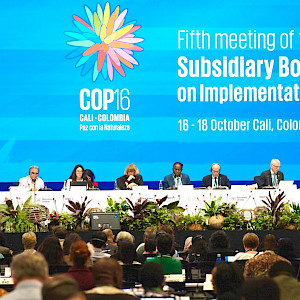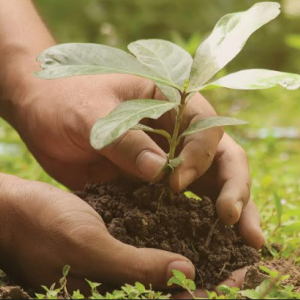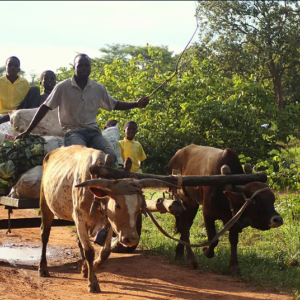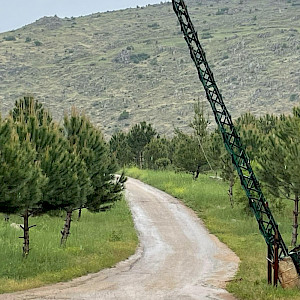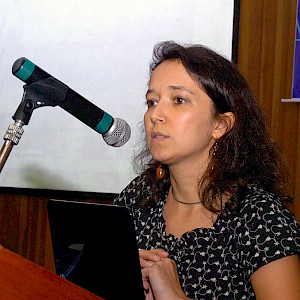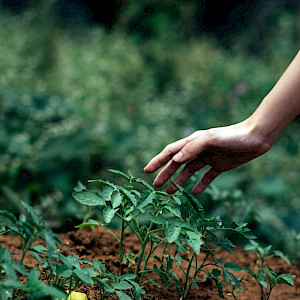“Engaging stakeholders and fostering participatory governance are fundamental to the success of Forest and Landscape Restoration (FLR)”, that is what Christophe Besacier, from FAO, believes in.
In the second principle of FLR, we discuss how to engage stakeholders and support participatory governance, something very important to increase the participation of people who can add even more knowledge to generate an active action plan for restoration. In this principle, FLR actively engages stakeholders at different scales, including vulnerable groups, in planning and decision making regarding land use, restoration goals and strategies, implementation methods, benefit sharing, monitoring and reviewing processes.
And of course our members know how essential this is for group work. Since its establishment in 2014, the FAO’s Forest and Landscape Restoration Mechanism (FLRM) has been instrumental in helping countries meet their ambitious restoration pledges.
“This principle ensures that restoration efforts reflect the diverse needs and knowledge of communities, governments, and civil society”, said Christophe Besacier. “By providing technical support, developing enabling conditions, and facilitating innovative restoration models, the FLRM has supported large-scale restoration efforts globally. The challenge ahead will be to sustain these collaborative efforts and adapt them to increasingly complex environmental and social contexts, ensuring that restoration benefits are both long-lasting and inclusive”, he completed.
In its FY23 report, USDA Forest Service also made clear the importance of acting collectively. USDA works by going to ecosystem restoration areas and offering the necessary knowledge for the work to be successful.
The document said: “When possible, partners, congressional staffers, researchers, members of the public, and representatives from our sister agencies join De Soto Ranger District specialists on site visits to ecosystem restoration areas to have open honest dialogue and discussion about site selection, design criteria for resource protection, restoration methodologies, and expected versus actual results. Sometimes these field outings are addressing specific needs about threatened and endangered species habitat restoration techniques as part of overall collaboration and responsiveness to working factions of the collaborative group. During these field expositions, input is gathered both verbally and in writing via open conversation and survey/comment forms for site locations and types. Seeing is believing, and we find this collaborative approach to reviewing and planning our work gives the best opportunity for gathering information pertinent to attainable and sustainable restoration practices.”
For Neville Ash, Director of the UN Environment Program World Conservation Monitoring Center, it is clear that restoration efforts can only be successful in the long-term when they are inclusive, involving local communities from across society. "UNEP-WCMC works to ensure inclusivity across multiple regions and ecosystems by engaging diverse stakeholder groups in restoration planning and practice. From overcoming disinformation and other key barriers for restoration in Europe, to participatory development of forest restoration monitoring frameworks across Asia we bring people together to maximize the impact of our work, and to celebrate and raise the profile of organisations and individuals working to conserve and restore nature", he said.
Talking about FLR is talking about the collective force and how we can involve citizens and individuals in decisions, in addition to encouraging collaboration. It also promotes transparency and helps to reach more places and people by promoting inclusion for everyone.
Principles
GPFLR identified six principles to promote global guidance on restoration:
1) Focus on landscapes
2) Engage stakeholders and support participatory governance
3) Restore multiple functions for multiple benefits
4) Maintain and enhance natural forest ecosystems within landscapes
5) Tailor to the local context
6) Manage adaptively for long-term resilience.
We asked partners how they see the principles and what their organizations are doing in this regard. In the coming weeks, leading up to COP 16, we will publish viewpoints of our GPFLR partners. Read the first article, about Focus on Landscapes by clicking here.



